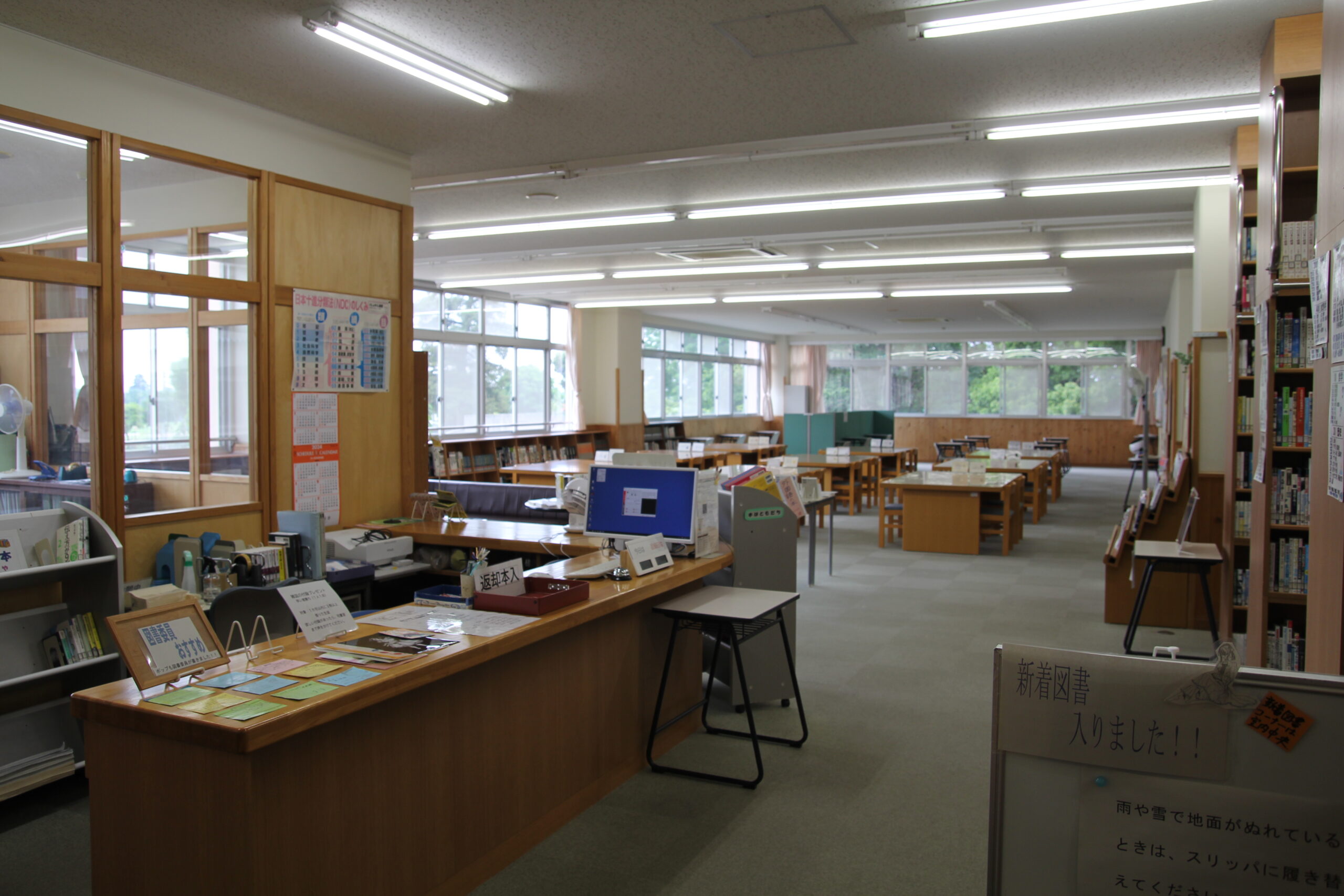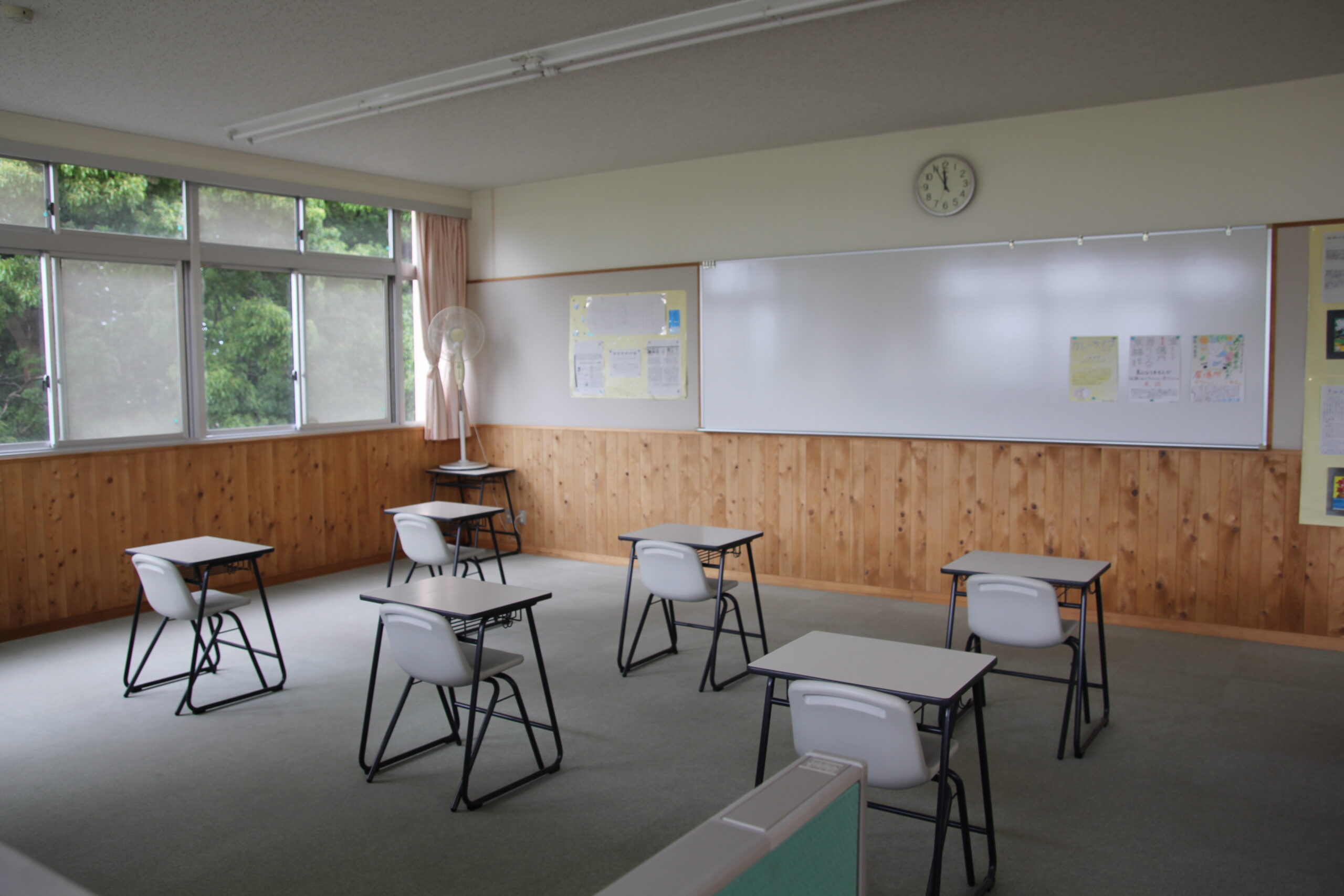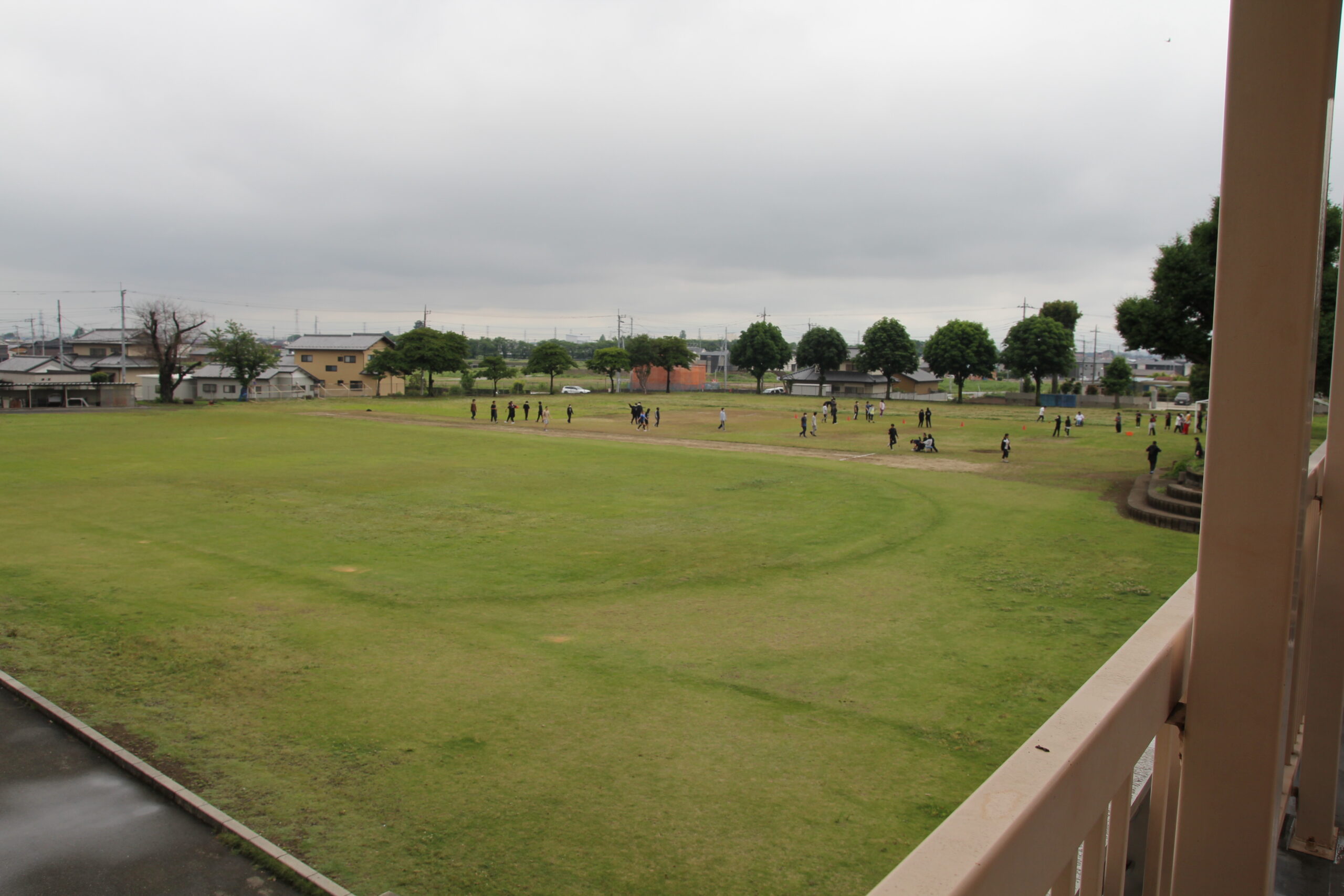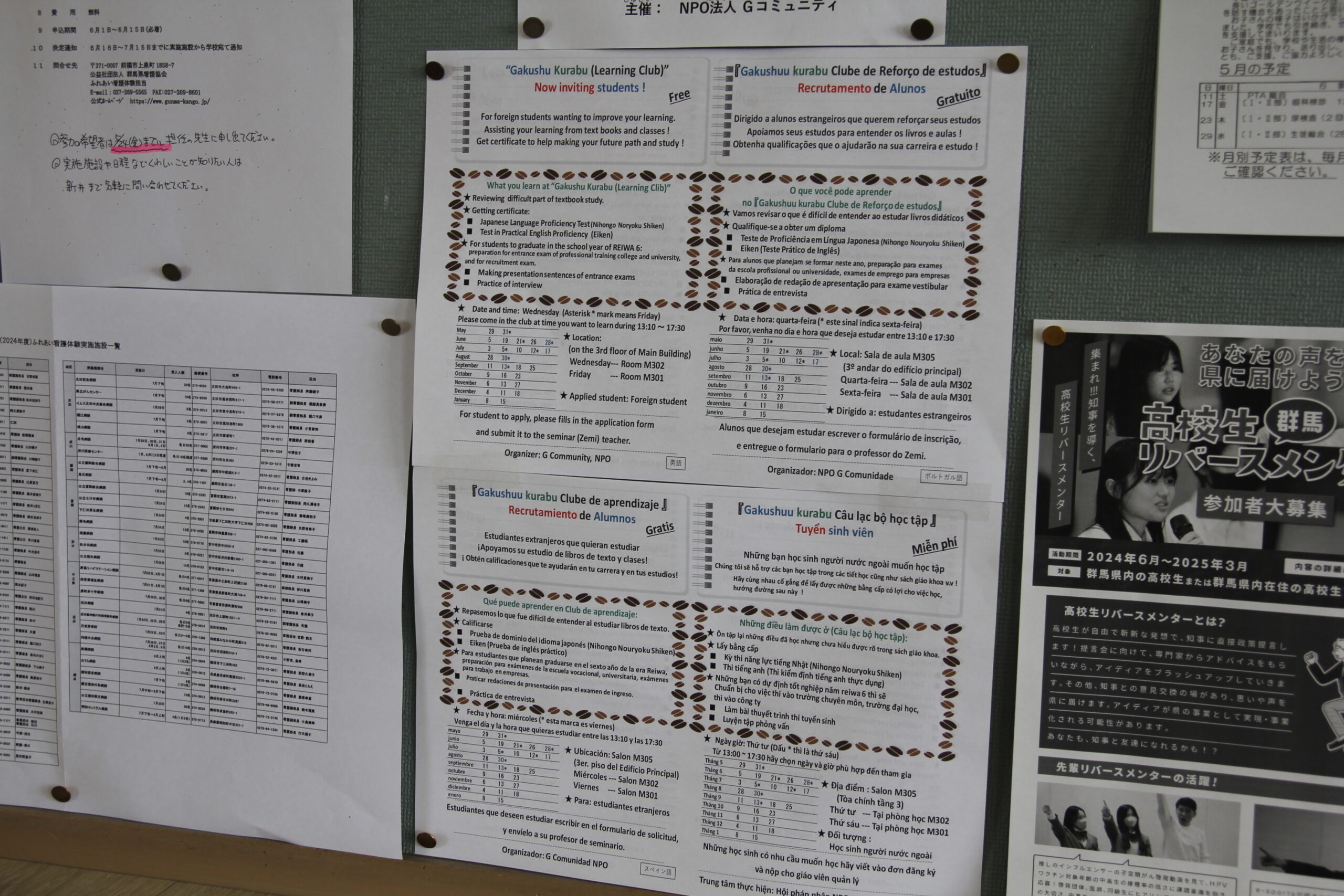フレックススクールってどんな学校? 太田フレックス高校編(下)[English / Português]
群馬県内にフレックススクールという形態の高校は太田フレックス高校と前橋清陵高校の2校だ。フレックススクールとはどういう形態の学校なのか。今回は太田フレックス高校(須田雄一郎校長)の木部誠先生に同校の特色などについて聞いた。(2回中の2)
ほかのことばに なおした きじ を よむ

【写真】太田フレックス高校・木部誠先生
子どもたちの学びのニーズが多種多様化している中、カリキュラムなどの点でフレックスに対応できる学校がフレックススクールだ。
「コースも何もなく、まったくフリーハンドで自分の時間割を作れる学校です」。木部先生は同校を含めたフレックススクールの特徴をこう説明する。とはいえ、普通科の高校なので、必履修科目は設定されている。
「本校は好きな科目だけ取れる学校と誤解されている方もいますが、たとえば体育が嫌いでも、必履修科目だからとらなければいけないんです」と木部先生は注意を促す。そういうミスマッチで続けられなくなった生徒もいるそうだ。
時間割は生徒それぞれが組み立てる。1年生は入学式前に来てもらい時間割を決める。必履修科目が多く、ほとんど選ぶ余地がないため、時間割を作るのは比較的容易にできるという。
これに対して、2年次以降は「時間割を作るのは大変な作業」(木部先生)。大学と同じく講座を選ぶスタイルのため、各授業の受講者数もバラバラになりがちだ。定員がいっぱいになってしまい、受講を断るケースも出てくる。学年末試験の結果で単位がとれていなければ再受講しなければいけないため、時間割の組み立ては容易ではない。このため時間割作りには1ヶ月かけているそうだ。
受講の仕方が大学に近いため、1組、2組…といった「クラス」はない。「こういうスタイルのため誤解されやすいのですが、決して少人数指導の学校ではないんです。たしかに少人数の授業もありますが、30人規模の授業もあり、入学後、戸惑うケースもあると聞きました」と木部先生は言う。
服装についても同様だ。「制服がないとうたってはいますが、かといって服装が自由というわけではなく、自由度はあるものの学校で学ぶのにふさわしい服装は求めています」(木部先生)
「フレックス」という言葉が独り歩きし、誤解したまま入学してしまうのを防ぐため、本気で入学を考えている中学生にはオープンスクールだけでなく、「個別の学校見学に参加してほしい」と木部先生は強く訴える。あくまでオープンスクールは学校の雰囲気に触れるためのもので、学校の仕組みなどを理解するためには個別の学校見学は不可欠だという。
個別の学校見学は6月からスタートする。中学校の許可を得た上で、保護者か本人がインターネットを通じて申し込める。ただし、学校見学は生徒だけの参加はできず、保護者の同伴が必要だ。
■4分の1が外国籍の生徒という特色を生かして多様な学びの実現へ
昨年度から、県の事業であるSAH(「自ら考え判断し行動できる生徒」の育成を目的としたスチューデント・エージェンシー・ハイスクール)の協力校に名乗りを上げた。
昨年は生徒主体で「スポーツ・デー」というイベントをつくりあげた。サッカー、バレーボール、ヨガなどの専門の講師を招き、みんなで汗を流した。イベント運営もすべて生徒の手で行われた。
外国籍の生徒が多いというのも同校の特色といえるかもしれない。本当は学力があっても「言葉の壁」で本領を発揮できない外国籍の子どもたちは少なくない。「本校は4分の1くらいが外国籍の生徒です」と木部先生は内情をあかす。それゆえ日本語指導の仕組みづくりが求められている。2023年度には「県立高校などにおける日本語指導の体制づくり」事業のモデル校に指定された。日本語を学ぶ講座や中学校までの学習内容を学び直す講座も設けられている。
多様な背景を持つ生徒たちが、それぞれのペースで学びを深められるフレックススクール。その一方で、「自由」の裏には責任と計画性が伴い、思い描いた理想とのギャップに戸惑うこともある。「だからこそ、入学を検討する段階で、しっかりと学校の内容を知り、自分に合った学びの形を見極めてほしい」と木部先生は話す。フレックススクールには、自分の意思で学びをデザインし、自らの未来を切り拓いていくためのステージが用意されている。
(編集部)
写真で見る太田フレックス高校(2)撮影は2024年

【写真】図書室の様子

【写真】図書室内にも教室が・・・

【写真】校庭の様子

【写真】掲示物もインターナショナル
What is a flex school? About Ota Flex High School #2
There are two high schools in Gunma Prefecture that are flex schools: Ota Flex High School and Maebashi Seiryo High School. What kind of school is a flex school? This time, we asked Mr. Kibe Makoto, head of the annual department at Ota Flex High School (Principal Yuichiro Suda), about the school’s characteristics. (Part 2 of 2)
■Misunderstandings due to the school name “flex”

[Photo] Mr. Kibe Makoto, Ota Flex High School
As children’s learning needs become more diverse, flex schools are schools that can accommodate flex in terms of curriculum and other aspects.
”We don’t have courses or anything, we’re schools where you can make your own timetable completely freehand,” says Kibe-sensei, explaining the characteristics of flex schools, including his own school. However, since it is a general high school, there are compulsory subjects.
”Some people misunderstand that our school is a school where you can only take the subjects you like, but even if you don’t like physical education, you have to take it because it’s a compulsory subject,” Kibe-sensei warns. Some students have been unable to continue because of such mismatches.
Each student makes their own timetable. First-year students come in before the entrance ceremony to decide on their timetable. There are many compulsory subjects, and there is almost no room for choice, so it is relatively easy to make a timetable.
In contrast, from the second year onwards, “making a timetable is a difficult task” (Kibe-sensei). Since students choose courses just like at university, the number of students in each class tends to vary. When the school is full, there are cases where students have to turn down enrollment. If students do not get credits based on the results of the end-of-year exams, they have to retake the class, so creating a timetable is not easy. For this reason, it takes a month to create a timetable.
Because the way the class is taken is similar to university, there are no “classes” such as group 1, group 2, etc. “This style is easy to misunderstand, but it is by no means a school that teaches small groups. It is true that there are small classes, but there are also classes with as many as 30 students, and I have heard that some students are confused after enrolling,” says Mr. Kibe.
The same can be said about clothing. “Although we advertise that there is no uniform, that does not mean that there is freedom in dress code. There is a degree of freedom, but we do ask that students wear clothing appropriate for studying at a school,” says Mr. Kibe.
In order to prevent the word “flex” from taking on a life of its own and students from enrolling with the wrong idea, Mr. Kibe strongly urges junior high school students who are seriously considering enrolling to not only attend open school, but also to “participate in individual school tours.” The open school is only for students to get a feel for the school atmosphere, but individual school tours are essential to understand how the school works.
Individual school tours will start in June. After getting permission from the junior high school, parents or students themselves can apply online. However, students cannot participate in school tours alone; they must be accompanied by a parent.
■ Making the most of the fact that one-quarter of the students are foreign nationals, to realize diverse learning
Last year, the school volunteered to participate in the prefectural project SAH (Student Agency High School, which aims to develop students who can think, judge, and act independently).
Last year, the students took the initiative in creating an event called “Sports Day.” Specialist instructors for soccer, volleyball, yoga, and other sports were invited, and everyone worked up a sweat. The event was also run entirely by the students.
One of the school’s characteristics may be that it has a large number of foreign nationals. There are many foreign children who, despite their academic ability, are unable to show their true potential due to the “language barrier.” “About a quarter of the students at our school are foreign nationals,” says Kibe-sensei. This is why a system for teaching Japanese is needed. In 2023, the school was designated as a model school for the “Creating a system for teaching Japanese at prefectural high schools and other institutions” project. There are also courses to learn Japanese and to review what they learned up to junior high school.
Flex School is a place where students from diverse backgrounds can deepen their learning at their own pace. On the other hand, behind the “freedom” comes responsibility and planning, and they can be confused by the gap between their ideal and what they had in mind. “That’s why, when you are considering enrolling, I want you to get to know the school’s content well and determine the type of learning that suits you,” says Kibe-sensei.
Flex School provides a stage for students to design their own learning and carve out their own future.
O que é uma Flex School? Edição Ota Flex High School #2
Há duas escolas de ensino médio do tipo flex school na província de Gunma: Ota Flex High School e Maebashi Seiryo High School. Que tipo de escola é uma escola flexível? Desta vez, conversamos com o Sr. Makoto Kibe, chefe do programa anual da Ota Flex High School (diretor Yuichiro Suda), sobre as características únicas da escola. (2 de 2)
■ Mal-entendidos devido ao nome da escola “Flex”

[Foto] Makoto Kibe, professor da Escola Secundária Ota Flex
À medida que as necessidades de aprendizagem das crianças se tornam mais diversas, as escolas flexíveis são escolas que podem acomodar a flexibilidade em termos de currículo e outros aspectos.
”É uma escola onde não há cursos e você tem total liberdade para fazer seu próprio horário.” O Sr. Kibe explica as características das escolas flexíveis, incluindo a sua, da seguinte forma: No entanto, como é uma escola secundária geral, há disciplinas obrigatórias.
”Algumas pessoas entendem errado que nossa escola é um lugar onde você pode cursar apenas as matérias que gosta, mas, por exemplo, mesmo que você não goste de educação física, você tem que cursar porque é uma matéria obrigatória”, alerta o Sr. Kibe. Aparentemente, alguns alunos não conseguem continuar por causa dessa incompatibilidade.
Cada aluno cria seu próprio horário. Os alunos do primeiro ano devem comparecer antes da cerimônia de entrada para que seus horários possam ser definidos. Como há muitas disciplinas obrigatórias e pouco espaço para escolha, criar um horário é relativamente fácil, disse ele.
Em contraste, a partir do segundo ano, “criar um cronograma dá muito trabalho”, diz o professor Kibe. Como os alunos escolhem os cursos da mesma forma que na universidade, o número de alunos matriculados em cada turma tende a variar. Há casos em que o curso fica lotado e os alunos têm que ser recusados. Não é fácil planejar sua agenda porque se você não ganhar créditos no exame de fim de ano, terá que refazer a disciplina. Por esse motivo, demora um mês para criar o cronograma.
Como o sistema de ensino é semelhante ao de uma universidade, não há “turmas” como Grupo 1, Grupo 2, etc. “Esse estilo de escola pode facilmente levar ao equívoco de que somos uma escola que oferece turmas pequenas, mas não somos de forma alguma uma escola que oferece turmas pequenas. Embora certamente existam turmas pequenas, também existem turmas com até 30 alunos, e ouvi dizer que alguns alunos ficam confusos depois de se matricularem”, diz Kibe.
O mesmo vale para roupas. “Embora afirmemos que não temos uniformes, isso não significa que somos livres para usar o que quisermos. Exigimos que os alunos usem roupas apropriadas para estudar na escola”, diz Kibe.
Para evitar que a palavra “flex” ganhe vida própria e faça com que os alunos se matriculem com um entendimento equivocado, o Sr. Kibe recomenda fortemente que os alunos do ensino fundamental que estão pensando seriamente em se matricular não apenas compareçam às sessões escolares abertas, mas também “participem de visitas guiadas individuais às escolas”. O objetivo da escola aberta é conhecer a atmosfera da escola, e visitas individuais são essenciais para entender como ela funciona.
Visitas escolares individuais começarão em junho. Com a permissão da escola de ensino fundamental, os pais ou os próprios alunos podem se inscrever on-line. No entanto, os alunos não podem participar sozinhos das visitas escolares; eles devem estar acompanhados pelos pais ou responsáveis.
■ Aproveitando o fato de que um quarto dos alunos são estrangeiros, pretendemos proporcionar uma experiência de aprendizagem diversificada
Desde o ano passado, a escola se voluntariou para se tornar uma escola cooperada da SAH (Student Agency High School) da prefeitura, uma iniciativa que visa formar “alunos que podem pensar, julgar e agir de forma independente”.
No ano passado, os estudantes assumiram a liderança na criação de um evento chamado “Dia do Esporte”. Convidamos instrutores especializados em futebol, vôlei, ioga e outros esportes, e todos se esforçaram muito. O evento foi organizado inteiramente pelos estudantes.
Uma das características distintivas da escola é que ela tem um grande número de alunos de nacionalidade estrangeira. Há muitas crianças estrangeiras que, apesar de serem academicamente talentosas, não conseguem demonstrar seu verdadeiro potencial devido à barreira do idioma. “Cerca de um quarto dos alunos da nossa escola são estrangeiros”, revela o Sr. Kibe. Portanto, há necessidade de criar um sistema para ensinar japonês. Em 2023, foi designada como escola modelo para “Estabelecer um sistema de ensino de língua japonesa em escolas secundárias da prefeitura, etc.” projeto. Também são oferecidos cursos para aprender a língua japonesa e reaprender o que foi aprendido até o nível do ensino fundamental.
Uma escola flexível onde alunos de diversas origens podem aprofundar seu aprendizado em seu próprio ritmo. Por outro lado, por trás da “liberdade” vêm responsabilidade e planejamento, e podemos ficar confusos com a lacuna entre nosso ideal e a realidade. “É por isso que, quando você estiver pensando em se matricular, quero que você aprenda profundamente sobre o conteúdo da escola e determine o tipo de aprendizado mais adequado para você”, diz o Sr. Kibe.
A Flexschool oferece um palco onde os alunos podem projetar sua própria aprendizagem e construir seu próprio futuro.
関連記事
編集部より 記事は配信日時点での情報です。











